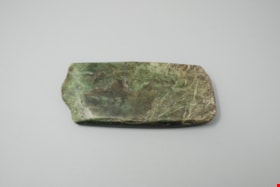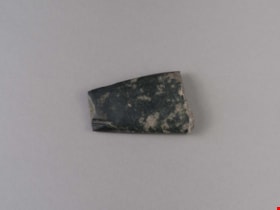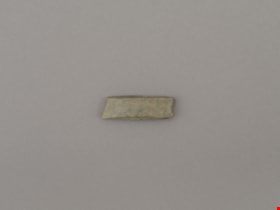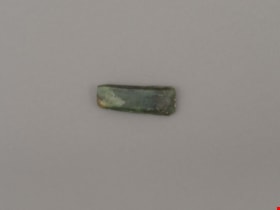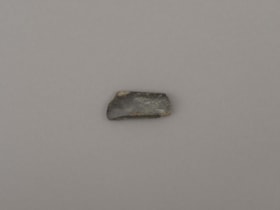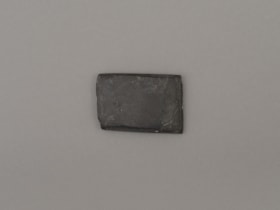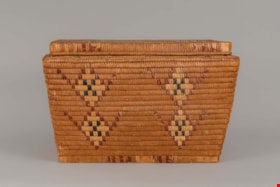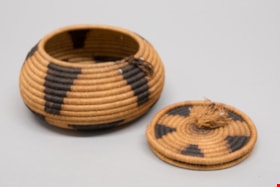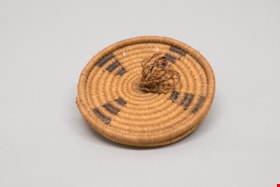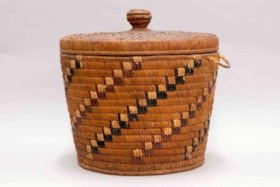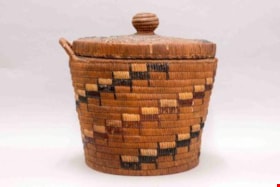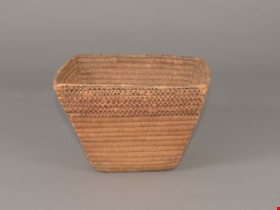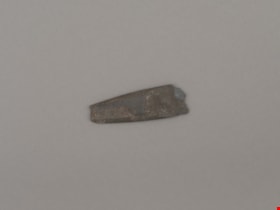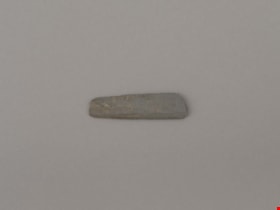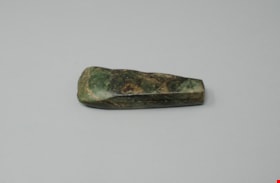More like 'Hazel Peterson photographs'
Narrow Results By
Subject
- Agriculture 1
- Agriculture - Farms 2
- Archeological Specimen 33
- Armament 18
- Arts 1
- Buildings - Commercial - Grocery Stores 1
- Buildings - Commercial - Restaurants 3
- Buildings - Commercial - Service Stations 1
- Buildings - Industrial - Saw Mills 1
- Buildings - Religious - Monasteries 1
- Buildings - Religious - Mosques 1
- Businesses 1
Person / Organization
- Alpha Secondary School 1
- Arora, Maninder 1
- Babey, Beverley 1
- Binning, Dr. Sadhu 1
- Binning, Gurmaje Kaur 1
- Binning, Jagdish 1
- Binning, Jit Singh 1
- Brentwood Park School 1
- Brentwood Shopping Centre 1
- British Columbia Hydro and Power Authority 1
- British Columbia Organization to Fight Racism 1
- Burnaby Central Secondary School 1
Interview with Richard Liu
https://search.heritageburnaby.ca/link/museumdescription20283
- Repository
- Burnaby Village Museum
- Date
- [1936-2023] (interview content), interviewed 11 Sep. 2023
- Collection/Fonds
- Burnaby Village Museum fonds
- Description Level
- Item
- Physical Description
- 3 sound recordings (wav) (153 min., 33 sec.) + 1 sound recording (mp3) (152 min., 59 sec.)
- Scope and Content
- Item consists of a recording of an oral history interview with Richard Liu conducted by Burnaby Village Museum researcher Denise Fong on September 11, 2023. 00:00:00 – 00:26:39 Richard Liu shares biographical information about himself and his family in China. He talks about his family being forced…
- Repository
- Burnaby Village Museum
- Collection/Fonds
- Burnaby Village Museum fonds
- Series
- Museum Oral Histories series
- Subseries
- Many Voices Project Interviews subseries
- Description Level
- Item
- Physical Description
- 3 sound recordings (wav) (153 min., 33 sec.) + 1 sound recording (mp3) (152 min., 59 sec.)
- Material Details
- Interviewer: Denise Fong Interviewee: Richard Liu Location of Interview: Love farmhouse at Burnaby Village Museum Interview Date: September 11, 2023 Total Number of tracks: 3 Total Length of all Tracks: 02:33:33 Digital master recordings (wav) were recorded onto three separate audio tracks, edited and merged together into one track and converted to mp3 for access on Heritage Burnaby
- Scope and Content
- Item consists of a recording of an oral history interview with Richard Liu conducted by Burnaby Village Museum researcher Denise Fong on September 11, 2023. 00:00:00 – 00:26:39 Richard Liu shares biographical information about himself and his family in China. He talks about his family being forced out by the communist regime in the early ‘50s and their experiences immigrating to Hong Kong, Europe and Canada. 00:26:40 - 00:32:59 Richard talks about his parents’ experiences living in Toronto, Victoria and Burnaby and shares some of his father’s business accomplishments including establishing the first direct flight to Beijing in 1987 and the first sister city between China and Canada. 00:33:00 – 01:13:59 Richard talks about living in Burnaby and his educational experiences at Thomas More Collegiate. He recalls his experience of travelling to North Korea in 1988 and being a student at Peking University in Beijing during the student-led demonstrations in Tiananmen Square and the Tiananmen Square massacre in 1989. 01:14:00 – 01:26:16 Richard talks about his education and reflects on how his experiences in Beijing influenced his education and career choices including working in the Prime Minister’s office on trade missions to China and talks about the importance of leaning French. 01:26:17 – 01:48:35 Richard shares his memories and experiences of; being on the Canadian Paralympic Committee during the 2008 Olympic and Paralympic Games in China, supporting Rick Hansen during his visit to China for the 25th anniversary of the Man in Motion World Tour and working with Team Canada in China for the 2022 Olympic Games. 01:48:36 – 01:52:22 Richard talks about his life in Burnaby after moving back from China in 2014 and the changes he’s noticed since being away. Richard talks about his involvement with St. John Ambulance, his role as the Honorary Brigade Division President and his role as Heritage Commissioner for the City of Burnaby. 02:14:32 – 02:29:27 Richard talks about his investiture to the Order of Saint John in 2023 and reflects on the accomplishments of his great uncle Dr. Shin-Shu Liu (China’s first Ambassador to Canada). 02:29:28 – 02:32:59 In closing Richard imparts some words of wisdom for future generations.
- History
- Interviewee biography: Richard N. Liu was born in 1970 in Toronto and raised in British Columbia. Richard's family has distinguished Canada-China ties for three generations. His Great-Uncle, Dr. Liu Shih-shun, was China's first Ambassador to Canada in 1942 and his father, Dr. Liu Dun-ren, built relations in education, culture and tourism for three decades including establishing the first Twin Sister City between Canada and China with Victoria and Suzhou in 1980. Richard's maternal great-grandfather, Dr. Wu Han-chi (1872-1913) played an active role in uprisings that shaped the future of modern China, was an elected member of the lower house of the first formal parliament in 1913 and was assassinated on political grounds. Dr. Wu's daughter, Dr. Wu Chi-mei served Dr. Sun Yat-sen, was elected as a Guangzhou City Councillor and visited Vancouver in 1929 and 1932. After graduating from St. Thomas More Collegiate in Vancouver, Richard Liu moved to China to begin his studies at Peking University but in 1989, following the Tiananmen Square protest and massacre, he was evacuated from China and returned to Canada. While back in Canada, Liu completed a BA in East Asian Studies from the University of British Columbia and in 1993, he returned to China to continue his Chinese studies at Peking University and continued to live in China for twenty years. In 2008, Richard worked as Team Canada’s Attaché for the Paralympic Summer Games that took place in Beijing. In 2014, Liu returned to Canada and made his home in Burnaby with his wife and two children. In 2022, Liu returned to Beijing to serve as Mission Staff member for Team Canada at the Winter Olympics. Richard has also played a leading role with the Terry Fox Run, Special Olympics and Rick Hansen's visit to Beijing in 2011. Liu’s areas of expertize include; public relations, diplomacy, major events organization and education. Liu works as an advisor in East Asian Studies at the University of British Columbia and is a MA Candidate at Peking University. Richard founded the Canadian Alumni Network that connects over 16,000 alumni in China who’ve attended Canada's post-secondary institutions. Liu has been a commissioner with the City of Burnaby’s Heritage Commission (2018-2023) and sits on various boards advising companies and organizations on a variety of sectors pertaining to Asia. In 2019, Liu was appointed the Honorary Brigade Division President for St. John Ambulance and was among 13 UBC Alumni to be recognized and awarded the 2018-2019 UBC Alumni Builder Award “For his service, dedication, and contribution to UBC and its alumni community. For his long record of service fostering connections with alumni and students in Beijing and Asia as well as dedication to mentoring students in the Faculty of Arts.” On June 24 2023, Richard was formally invested into the Order of St. John, one of five national orders in the Canadian Honours System. Interviewer biography: Denise Fong is a historical researcher at Burnaby Village Museum. She has degrees in Anthropology (BA) and Archaeology (MA), and is completing her doctoral degree at UBC in Interdisciplinary Studies. Her primary research interests are in Chinese Canadian history and critical heritage studies. She is the co-curator of BVM’s “Across the Pacific” exhibition, and the Museum of Vancouver’s “A Seat at the Table – Chinese Immigration and British Columbia”.
- Creator
- Burnaby Village Museum
- Subjects
- Persons - Chinese Canadians
- Migration
- Officials
- Education
- Protests and Demonstrations
- Social Issues
- Social Issues - Racism
- Sports
- Travel
- Religions - Christianity
- Names
- Canadian Paralympic Committee
- Chak, Dr. Po Tin
- Chinese Canadian Historical Society of BC
- Liu, Richard N.
- Liu, Dr. Dun-ren
- Liu, Dr. Shih-Shun
- Gigli, Beniamino
- Hansen, Richard Marvin "Rick"
- Olympic Games
- Paralympic Games
- Peking University
- St. John Ambulance
- St. Thomas More Collegiate
- Tiananmen Square
- University of British Columbia
- Responsibility
- Fong, Denise
- Accession Code
- BV023.16.17
- Access Restriction
- No restrictions
- Reproduction Restriction
- No known restrictions
- Date
- [1936-2023] (interview content), interviewed 11 Sep. 2023
- Media Type
- Sound Recording
- Notes
- Title based on contents of item
- transcription available
Documents
Audio Tracks
Interview with Richard Liu, [1936-2023] (interview content), interviewed 11 Sep. 2023
Interview with Richard Liu, [1936-2023] (interview content), interviewed 11 Sep. 2023
https://search.heritageburnaby.ca/media/hpo/_Data/_BVM_Sound_Recordings/Oral_Histories/2023_0016_0017_004.mp3Interview with Ellen and Bill Schwartz
https://search.heritageburnaby.ca/link/museumdescription19602
- Repository
- Burnaby Village Museum
- Date
- [1969-2023] (interview content), interviewed 15 May 2023
- Collection/Fonds
- Burnaby Village Museum fonds
- Description Level
- Item
- Physical Description
- 2 sound recordings (wav) (68 min., 52 sec.) + 1 sound recording (mp3) (68 min., 53 sec.)
- Scope and Content
- Item consists of a recording of an oral history interview with Ellen and Bill Schwartz conducted by Burnaby Village Museum Registrar and Researcher, Eric Damer. 00:00-16:47 Bill and Ellen share where they were born, grew up and went to school as citizens of the United States and how they met in Pe…
- Repository
- Burnaby Village Museum
- Collection/Fonds
- Burnaby Village Museum fonds
- Series
- Museum Oral Histories series
- Subseries
- Many Voices Project Interviews subseries
- Description Level
- Item
- Physical Description
- 2 sound recordings (wav) (68 min., 52 sec.) + 1 sound recording (mp3) (68 min., 53 sec.)
- Material Details
- Interviewer: Eric Damer Interviewees: Ellen and Bill Schwartz Location of Interview: Burnaby Village Museum Interview Date: May 15, 2023 Total Number of tracks: 2 Total Length of all Tracks: 01:08:52 Digital master recordings (wav) were recorded onto two separate audio tracks, edited and merged together and converted to mp3 for access on Heritage Burnaby Photograph information: Bill and Ellen Schwartz.
- Scope and Content
- Item consists of a recording of an oral history interview with Ellen and Bill Schwartz conducted by Burnaby Village Museum Registrar and Researcher, Eric Damer. 00:00-16:47 Bill and Ellen share where they were born, grew up and went to school as citizens of the United States and how they met in Pennsylvania the 1970s. Bill and Ellen explain how in the 1970s, they were discouraged about the current politics in the United States under the Nixon administration and how they were inspired by the “back to the land” ideals, rejecting materialism and wanting an alternative lifestyle. With these ideals in mind, they recall how in 1972 they and a few other friends decided to leave the United States, move to British Columbia with the goal of buying land in the Okanagan or Kootenay region and starting a new lifestyle for themselves. Bill and Ellen recollect how they purchased 20 acres of land in Galena Bay in the Kootenays and how they lived in the area off and on until the early 1980s. They describe how they cleared three acres of land, built a cabin, put in a garden, chicken coop and honey bees. With the challenges of the isolated location and no access to electricity they explain how they decided that they had to live elsewhere in order to make a living. Ellen talks about working as a special education teacher in Revelstoke and Slocan and how Bill obtained his teaching certificate while they lived in Nelson. Bill and Ellen describe themselves as environmentalists and of how they both became active Provincial environmentalists during the construction of the Revelstoke Dam. Bill talks about getting work with the “Energy Van” program talking about energy conservation, renewable energy and recycling. They explain how after their first child was born in 1980, they returned to Galena Bay for about a year and a half until Bill was offered a job with the Department of Energy Conservation which lead them to move to Vancouver. 16:48 – 22:46 Bill and Ellen describe their first few years of living in Vancouver and at University of British Columbia while Ellen completed her master’s degree in creative writing. During this time, they had their second child. They recall how in 1988 how they purchased a house in Burnaby, selecting to live in the Deer Lake neighbourhood. They talk about the benefits of the neighbourhood including; a French immersion school for their children, proximity to the trails around Deer Lake and having transit close by. 22:47 – 33:55 Bill and Ellen talk about their consulting business “Polestar Communications”. A Burnaby based communications consulting firm composed of three people, Ellen and Bill and colleague Richard Banner. They describe how their business got started and some of the projects that they’ve worked on including; BC Hydro’s Power Smart Program, financial literacy curriculum that was introduced in B.C. schools and reports for the Province of British Columbia. Ellen and Bill convey how Bill has been a very active member with the City of Burnaby Environment Committee, the Steering Committee to develop a sustainable environmental strategy for Burnaby, how he’s been awarded for his contributions in coaching youth sports and other areas in which they have both volunteered. 33:56 – 43:07 Ellen describes how she got started in writing educational resources about the environment and how since she completed grad school in 1984, she’s published nineteen books. Ellen conveys how her first book was published and sold to the Province of British Columbia as part of the B.C. educational curriculum on the environment. Ellen talks about some of the children’s books that she’s written and published with themes including; social justice, the labour movement and racism in sports. Ellen describes some of her books and the research that she’s done. 43:08 – 51:04 Ellen and Bill Schwartz reflect on what they like about living in Burnaby. They talk about the benefits of their neighbourhood including; performances at the Shadbolt Centre for the Arts, the Burnaby Blues and Roots Festival, the Burnaby Art Gallery and Deer Lake as well as having access to parks and community centres in Burnaby. 51:05-56:36 Bill and Ellen reflect on their involvement in the Jewish community, considering themselves non-secular Jews. Ellen talks about how they were involved with “Burquest” a Jewish Community Association and how they often observe some of the Jewish holidays including Hanukah and traditions including the Jewish coming of age ritual, bar mitzvah (masc.) and bat mistvah (fem.). Ellen mentions her involvement with the “Jone Betty Stuchner Oy Vey! Funniest Children’s book Award” where she acts a judge and her involvement with the Jewish Book festival and that she is a recipient of the Jewish Book award. 56:37 – 1:08:53 Bill and Ellen reflect on their 35 years living in Burnaby and how they’ve seen it change. They talk about the increased development and density in the city, how they are troubled by a lack of low income housing, the benefits and importance of public transportation and preservation of green space including Burnaby parks.
- History
- Interviewees' biographies: Ellen Schwartz was born in Washington, DC, (1950) but grew up in New Jersey. She attended the Universities of Chicago and Wisconsin before moving to a farm in Pennsylvania, where she met her future husband Bill Schwartz. Bill Schwartz grew up in and around Philadelphia (b. 1947), and attended Pennsylvania State University. After travelling, and discouraged with life in eastern America, he and Ellen decided that British Columbia held better prospects. Bill and Ellen quit their jobs in 1972 and moved to the Kootenay region where they adopted a “back to the land” lifestyle, a very new experience for both of them. After eight years of modest success, and occasional work in nearby towns, they opted to return to Vancouver where Bill had work and where they could raise a family more easily. They rented in Vancouver for a few years before moving to family housing at UBC, while Ellen studied creative writing. Bill founded a communications and writing company, and in 1988 they purchased a home in Burnaby. Ellen launched a new career as a writer, mainly for children young adults. Both were active in their careers, raising a family, and participating in local social and political activities. Interviewer biography: Eric Damer is a Burnaby Village Museum Interpreter, Museum Registrar, Researcher and Blacksmith. Eric pounded hot steel for the first time in 1977 in junior high. Fifteen years later, he joined Burnaby Village Museum where he has smithed for three decades. He also provides historical research for museum exhibits and special projects. Outside the museum, Eric is a social historian with a special interest in educational history.
- Creator
- Burnaby Village Museum
- Subjects
- Education
- Environmental Issues
- Environmental Issues - Environmental Protection
- Geographic Features
- Geographic Features - Parks
- Housing
- Occupations
- Occupations - Entrepreneurs
- Occupations - Writers
- Persons - Volunteers
- Persons - Jewish Canadians
- Social Issues
- Social Issues - Racism
- Religions
- Religions - Judaism
- Names
- Schwartz, William "Bill"
- Schwartz, Ellen
- City of Burnaby
- Polestar Communications
- British Columbia Hydro and Power Authority
- Responsibility
- Damer, Eric
- Accession Code
- BV023.16.6
- Access Restriction
- No restrictions
- Reproduction Restriction
- No known restrictions
- Date
- [1969-2023] (interview content), interviewed 15 May 2023
- Media Type
- Sound Recording
- Historic Neighbourhood
- Burnaby Lake (Historic Neighbourhood)
- Planning Study Area
- Burnaby Lake Area
- Notes
- Title based on contents of item
- Transcription available on Heritage Burnaby
Images
Documents
Audio Tracks
Interview with Ellen and Bill Schwartz, [1969-2023] (interview content), interviewed 15 May 2023
Interview with Ellen and Bill Schwartz, [1969-2023] (interview content), interviewed 15 May 2023
https://search.heritageburnaby.ca/media/hpo/_Data/_BVM_Sound_Recordings/Oral_Histories/2023_0016_0006_003.mp3Interview with Jagandeep "Jag" Nagra
https://search.heritageburnaby.ca/link/museumdescription19605
- Repository
- Burnaby Village Museum
- Date
- 1984-2023 (interview content), interviewed 5 Jun. 2023
- Collection/Fonds
- Burnaby Village Museum fonds
- Description Level
- Item
- Physical Description
- 1 sound recording (wav) (47 min., 26 sec.) + 1 sound recording (mp3) (47 min., 27 sec.)
- Scope and Content
- Item consists of a recording of an oral history interview with Jagandeep "Jag" Nagra interviewed by Burnaby Village Museum Registrar, James Binks. 00:00:00 – 00:04:31 The interview opens with introductions and biographical details about Jag Nagra. The interviewer shares information about Jag Nagra…
- Repository
- Burnaby Village Museum
- Collection/Fonds
- Burnaby Village Museum fonds
- Series
- Museum Oral Histories series
- Subseries
- Many Voices Project Interviews subseries
- Description Level
- Item
- Physical Description
- 1 sound recording (wav) (47 min., 26 sec.) + 1 sound recording (mp3) (47 min., 27 sec.)
- Material Details
- Interviewer: James Binks Interviewee: Jagandeep "Jag" Nagra Location of Interview: Burnaby Village Museum Interview Date: June 5, 2023 Total Number of tracks: 1 Total Length of all Tracks: 47:27
- Scope and Content
- Item consists of a recording of an oral history interview with Jagandeep "Jag" Nagra interviewed by Burnaby Village Museum Registrar, James Binks. 00:00:00 – 00:04:31 The interview opens with introductions and biographical details about Jag Nagra. The interviewer shares information about Jag Nagra’s art career and the many art projects and commissions that Jag has worked on. Jag shares information about her parents, providing details about their immigration to British Columbia from Punjab and the places that Jag and her family have lived over the years. 00:04:32 – 00:12:38 Jag talks about what inspired her to become interested in art, her art education and how her artistic practice and expression have developed over time. Jag describes how she first started in graphic design, how she’s become more involved in public art and her experience working in design. Jag touches on her experiences of being a South Asian growing up and living in a predominantly white neighbourhood and provides information about her parents, Avatar Singh Nagra and Rajwant Kaur Nagra and their migration to Canada. 00:12:39 – 00:20:03 Jag talks about her inspiration in creating her work, her involvement with the revitalization of the Punjabi Market in Vancouver, the Punjabi Market Collective and other public art projects that she’s been involved with focusing on the South Asian community and LGBTQ+ issues. 00:20:04 – 00:41:09 Jag talks about her involvement with the Burnaby Village Museum’s exhibit “Truths Not Often Told: Being South Asian in Burnaby”. The interviewer and Jag take a walk throughout the exhibit while Jag describes the art work that she created for the exhibit and her creative process. Jag reflects on her own experiences being involved in the exhibit. 00:41:10 – 00:47:27 Jag talks about her own experiences as a South Asian Queer artist reflecting on her experiences within the art community. In closing Jag reflects on the impacts of the exhibit that celebrates South Asian culture in Burnaby.
- History
- Interviewee biography: Jagandeep "Jag" Nagra is a queer Panjabi Visual Artist passionate about community development, making art accessible and ending stigma against LGBTQ+ people within the South Asian community. Nagra has worked with clients such as the Vancouver Canucks, Tim Hortons and Microsoft and is currently serving as Vice Chair of the Punjabi Market Collective. She is featured in the internationally acclaimed, award wining LGBTQ documentary Emergence: Out of the Shadows. Her artworks are part of the Museum of Vancouver’s permanent collection and have been commissioned for the Burnaby Village Museum exhibit "Truths Not Often Told: Being South Asian in Burnaby". Interviewer biography: James Binks has lived in the Lower Mainland since 2009 after relocating from Ontario. James holds a Bachelor of Arts in Anthropology from the University of British Columbia, where he conducted researched on heritage, environment, and globalization in India, Nepal, and Italy. At Burnaby Village Museum, James contributed to the exhibit “Truths Not Often Told: Being South Asian in Burnaby”.
- Creator
- Burnaby Village Museum
- Subjects
- Migration
- Persons - South Asian Canadians
- Persons - LGBTQ+
- Occupations - Artists
- Social Issues
- Social Issues - Racism
- Social Issues - Discrimination
- Names
- Nagra, Jagandeep "Jag"
- Responsibility
- Binks, James
- Accession Code
- BV023.16.9
- Access Restriction
- No restrictions
- Reproduction Restriction
- No known restrictions
- Date
- 1984-2023 (interview content), interviewed 5 Jun. 2023
- Media Type
- Sound Recording
- Notes
- Title based on contents of item
- Transcription available on Heritage Burnaby
Documents
Audio Tracks
Interview with Jagandeep
adze blade
https://search.heritageburnaby.ca/link/museumartifact44868
- Repository
- Burnaby Village Museum
- Accession Code
- BV002.57.19
- Description
- Nephrite adze blade; chipped on one end; rectangular shaped.
- Object History
- The donor inherited this artifact from his mother, Katherine Maude (Kitty) Peers, who inherited them from her father, Louis Claude Hill. The artifacts were found on his farm, Brookfield Farm, at Douglas Road and Sperling Avenue (now site of Burnaby Village Museum).
- Nephrite is found in the Fraser Canyon
- Culture Phase: Possibly Locarno Beach phase (3520-2200 Before Present) or Marpole (400BC - 400AD)
- Historic Neighbourhood
- Burnaby Lake (Historic Neighbourhood)
Images
Documents
adze blade
https://search.heritageburnaby.ca/link/museumartifact44870
- Repository
- Burnaby Village Museum
- Accession Code
- BV002.57.21
- Description
- Chisel, adze or axe blade made of serpentine; black; ends broken off; tapered rectangle shape.
- Object History
- The donor inherited this artifact from his mother, Katherine Maude (Kitty) Peers, who inherited them from her father, Louis Claude Hill. The artifacts were found on his farm, Brookfield Farm, at Douglas Road and Sperling Avenue (now site of Burnaby Village Museum).
- Culture Phase: Locarno Beach (3520-2200 Before Present) or Marpole (400BC - 400AD)
- Historic Neighbourhood
- Burnaby Lake (Historic Neighbourhood)
Images
Documents
adze blade
https://search.heritageburnaby.ca/link/museumartifact44872
- Repository
- Burnaby Village Museum
- Accession Code
- BV002.57.23
- Description
- Chisel, adze or axe blade made of serpentine; small
- Object History
- The donor inherited this artifact from his mother, Katherine Maude (Kitty) Peers, who inherited them from her father, Louis Claude Hill. The artifacts were found on his farm, Brookfield Farm, at Douglas Road and Sperling Avenue (now site of Burnaby Village Museum).
- Culture Phase: Locarno Beach (3520-2200 Before Present) or Marpole (400BC - 400AD)
- Historic Neighbourhood
- Burnaby Lake (Historic Neighbourhood)
Images
Documents
adze blade
https://search.heritageburnaby.ca/link/museumartifact44873
- Repository
- Burnaby Village Museum
- Accession Code
- BV002.57.24
- Description
- Nephrite adze blade; small
- Object History
- The donor inherited this artifact from his mother, Katherine Maude (Kitty) Peers, who inherited them from her father, Louis Claude Hill. The artifacts were found on his farm, Brookfield Farm, at Douglas Road and Sperling Avenue (now site of Burnaby Village Museum).
- Nephrite is found in the Fraser Canyon
- Culture Phase: Locarno Beach (3520-2200 Before Present) or Marpole (400BC - 400AD)
- Historic Neighbourhood
- Burnaby Lake (Historic Neighbourhood)
Images
Documents
adze blade
https://search.heritageburnaby.ca/link/museumartifact44874
- Repository
- Burnaby Village Museum
- Accession Code
- BV002.57.25
- Description
- Adze blade; small; possibly nephrite.
- Object History
- The donor inherited this artifact from his mother, Katherine Maude (Kitty) Peers, who inherited them from her father, Louis Claude Hill. The artifacts were found on his farm, Brookfield Farm, at Douglas Road and Sperling Avenue (now site of Burnaby Village Museum).
- Nephrite is found in the Fraser Canyon
- Culture Phase: Locarno Beach (3520-2200 Before Present) or Marpole (400BC - 400AD)
- Historic Neighbourhood
- Burnaby Lake (Historic Neighbourhood)
Images
Documents
adze blade
https://search.heritageburnaby.ca/link/museumartifact44876
- Repository
- Burnaby Village Museum
- Accession Code
- BV002.57.27
- Description
- Nephrite adze blade; rectangular; chipped on one side; slightly grooved on longer edges.
- Object History
- The donor inherited this artifact from his mother, Katherine Maude (Kitty) Peers, who inherited them from her father, Louis Claude Hill. The artifacts were found on his farm, Brookfield Farm, at Douglas Road and Sperling Avenue (now site of Burnaby Village Museum).
- Nephrite is found in the Fraser Canyon
- Marpole Culture (400BC - 400AD) or Gulf of Georgia Culture (400 AD – 1800); essentially these archaeological materials date to the last 2400 years.
- Historic Neighbourhood
- Burnaby Lake (Historic Neighbourhood)
Images
Documents
basket
https://search.heritageburnaby.ca/link/museumartifact17681
- Repository
- Burnaby Village Museum
- Accession Code
- HV978.2.13
- Description
- Nut-shaped, coiled cedar root basket with cedar root foundation and watch-spring base and lid construction. Hinged lid is attached with leather ties. Covered in beading, where in the decorative elements are laid flat on surface, rather than folded into cedar root stitches as is done with imbrication. Designs are in red and black dyed cherry bark. Interior Salish: Nlaka’pamux
- Object History
- Nut-shaped baskets are identified as one of the oldest types by Haeberlin and Teit (1928: 202-3). They were used for storing berries and were also common work baskets for women, used to hold small tools – awls, thread, shells, trinkets and other odds and ends (202).
- Country Made
- Canada
- Province Made
- British Columbia
- Culture
- Nlaka'pamux
Images
Documents
basket
https://search.heritageburnaby.ca/link/museumartifact27529
- Repository
- Burnaby Village Museum
- Accession Code
- HV974.119.3
- Description
- Rectangular coiled cedar root basket with cedar slat foundation, lid has parallel slat construction and is covered with beaded designs edged by imbrication in canary grass. Basket has a flat lid that is hinged to body with leather ties. A mistake was made in how the design was applied to one end of this basket. This is not common as many weavers would correct this mistake. Completely imbricated walls, beaded design on lid. Coast Salish: Sḵwx̱wú7mesh?
- Object History
- The donor reported that the baskets were traded in the early 1920s for clothes by the donor's mother, who lived in North Vancouver. Her mother told her the "Capilano Indians" used to go door to door with their baskets in North Vancouver.
- Diamonds are considered a star pattern and are common to Sḵwx̱wú7mesh and Nlaka’pamux basketry. The main design resembles a ladder or fence and is uncommon.
- Country Made
- Canada
- Province Made
- British Columbia
- Culture
- Sḵwx̱wú7mesh
Images
Documents
basket
https://search.heritageburnaby.ca/link/museumartifact30051
- Repository
- Burnaby Village Museum
- Accession Code
- HV973.79.1
- Description
- Rectangular coiled cedar root basket with cedar slat foundation. Parallel slat base and lid. Walls of basket flare slightly towards the rim. Basket has a conoid lid – one that fits over top of a flange on the rim of the basket. Rim is inset. Sets of triangular shaped stitches attach base to walls. Base of basket is protected by a foot, one slat high. Grass used for imbricated designs has a flat appearance typical of cattail grass. Black dyed and red cherry bark used for other design elements. Handles missing.
- Object History
- Design variant is uncommon. This may be a zoomorphic design possibly representing an animal head or flying bird.
- Country Made
- Canada
- Province Made
- British Columbia
- School/Style
- Coast Salish
Images
Documents
basket
https://search.heritageburnaby.ca/link/museumartifact50308
- Repository
- Burnaby Village Museum
- Accession Code
- BV006.24.5
- Description
- The basket is round with a lid and has a geometric design in black. Made using the coiled method.
- Object History
- Resembles California and Southwestern style baskets made of willow, dye and grass.
- Country Made
- United States of America
- Province Made
- California
Images
Documents
basket lid
https://search.heritageburnaby.ca/link/museumartifact50309
- Repository
- Burnaby Village Museum
- Accession Code
- BV006.24.6
- Description
- The basket is round with a lid and has a geometric design in black. Made using the coiled method.
- Object History
- Resembles California and Southwestern style baskets made of willow, dye and grass.
Images
Documents
basket with lid
https://search.heritageburnaby.ca/link/museumartifact87630
- Repository
- Burnaby Village Museum
- Accession Code
- BV017.11.3
- Description
- basket with lid; First Nations basket with lid; The basket is round, with two handles opposite each other. The handles are wrapped twine. The wrapping is missing from one handle. The lid has a knob handle in the centre. Basket and lid are decorated with a dark and light spiraling pattern. Had been used for storing knitting.
- Object History
- The basket was acquired by the donor's grandparents, Matilda and Robert William Handel, when they were living in North Vancouver. They were made by one of the local First Nations weavers, name unknown.
- Measurements
- Approx. H: 32 cm Dia.: 34 cm
- Culture
- ʷməθkʷəy̓əm (Musqueam)
Images
Documents
basket with lid
https://search.heritageburnaby.ca/link/museumartifact87633
- Repository
- Burnaby Village Museum
- Accession Code
- BV017.11.4
- Description
- basket with lid; First Nations basket with lid; The basket is round, with a single handle (opposite handle is missing). The lid has a knob handle in the centre. Basket and lid are decorated with a dark and light spiraling pattern. Had been used for storing knitting.
- Object History
- The basket was acquired by the donor's grandparents, Matilda and Robert William Handel, when they were living in North Vancouver. They were made by one of the local First Nations weavers, name unknown.
- Measurements
- Approx. H: 37 cm Dia.: 36 cm
- Culture
- ʷməθkʷəy̓əm (Musqueam)
Images
Documents
berry basket
https://search.heritageburnaby.ca/link/museumartifact27527
- Repository
- Burnaby Village Museum
- Accession Code
- HV974.119.1
- Description
- Trapezoidal shaped, coiled cedar root basket with cedar slat foundation. Finished with an overcast rim with root foundation. Design elements missing from one side of the basket, which is uncommon but has been seen on cradles from the Mount Currie area (Interior Salish: Lil'wat). It was perhaps the side that rests on the wearer's back. Steeply angled sides.
- Coast Salish: Sḵwx̱wú7mesh? Interior Salish: Stl’atl’imx: Lil’wat?
- Object History
- The donor reported that the baskets were traded in the early 1920s for clothes by the donor's mother, who lived in North Vancouver. Her mother told her the "Capilano Indians" used to go door to door with their baskets in North Vancouver.
- Design elements missing from one side of the basket – possibly the side that would have rested against the owner’s back.
- Steeply angled sides keep berries from crushing those at bottom of basket. Work baskets have sides that are more rounded.
- Baskets like these were used with a woven tumpline (wool strap) that was worn against the forehead, while basket was carried on back.
- Country Made
- Canada
- Province Made
- British Columbia
- Culture
- Stl’atl’imx
Images
Documents
blade or projectile
https://search.heritageburnaby.ca/link/museumartifact44879
- Repository
- Burnaby Village Museum
- Accession Code
- BV002.57.30
- Description
- Ground slate point
- Object History
- The donor inherited this artifact from his mother, Katherine Maude (Kitty) Peers, who inherited them from her father, Louis Claude Hill. The artifacts were found on his farm, Brookfield Farm, at Douglas Road and Sperling Avenue (now site of Burnaby Village Museum).
- Culture Phase: Locarno Beach phase (3520-2200 Before Present)
- Historic Neighbourhood
- Burnaby Lake (Historic Neighbourhood)
Images
Documents
blade or projectile point
https://search.heritageburnaby.ca/link/museumartifact44878
- Repository
- Burnaby Village Museum
- Accession Code
- BV002.57.29
- Description
- Ground and faceted stone point
- Object History
- The donor inherited this artifact from his mother, Katherine Maude (Kitty) Peers, who inherited them from her father, Louis Claude Hill. The artifacts were found on his farm, Brookfield Farm, at Douglas Road and Sperling Avenue (now site of Burnaby Village Museum).
- Culture Phase: Locarno Beach phase (3520-2200 Before Present)
- Historic Neighbourhood
- Burnaby Lake (Historic Neighbourhood)
Images
Documents
chisel
https://search.heritageburnaby.ca/link/museumartifact38885
- Repository
- Burnaby Village Museum
- Accession Code
- BV998.11.1
- Description
- Chisel shaped tool, wedge-shaped; mainly green with white and brown fissures throughout. One side has elevated edge, possibly for attaching to handle.
- Object History
- The stone chisel was found by Archie Card, ca 1930 in the yard of the Card family home at 329 Richmond Street (later renamed Elwell) in Burnaby.
![Interview with Ellen and Bill Schwartz, [1969-2023] (interview content), interviewed 15 May 2023 thumbnail](/media/hpo/_Data/_BVM_Sound_Recordings/Oral_Histories/2023_0016_0006_001.jpg?width=280)
